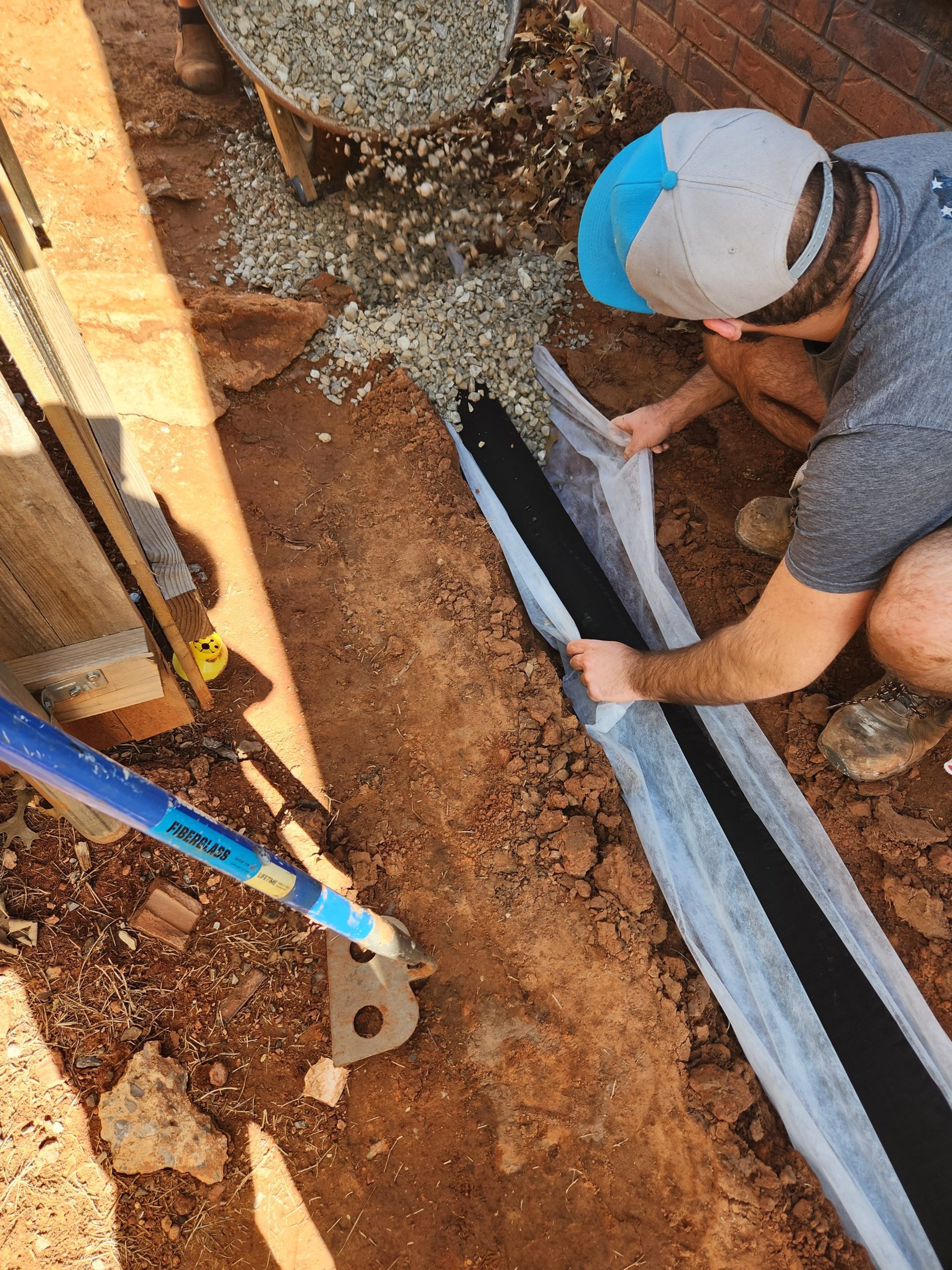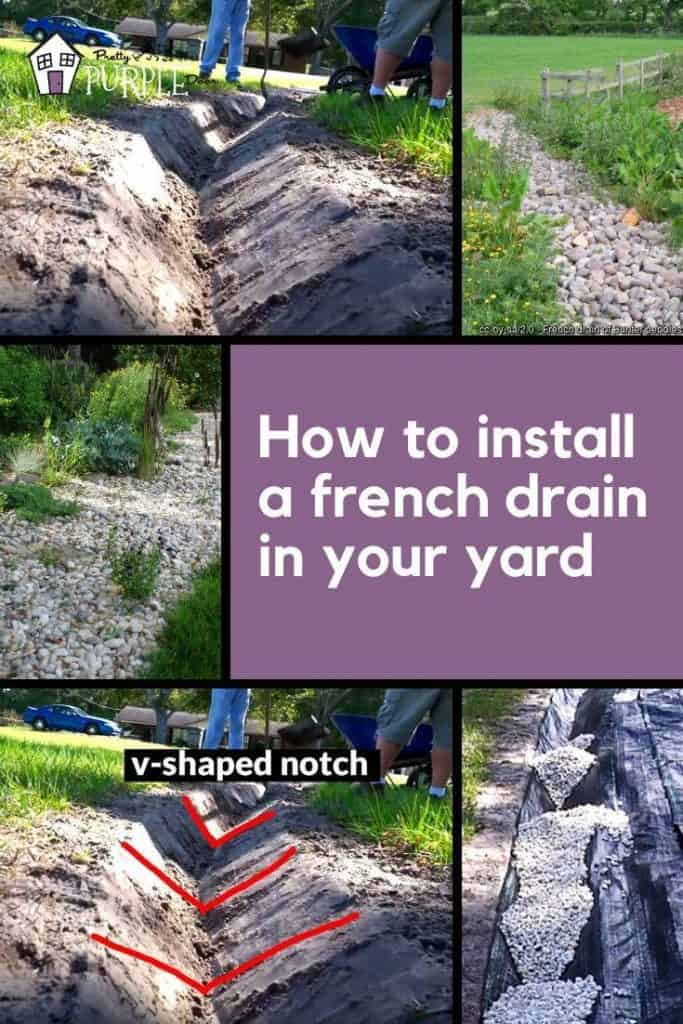What to Expect During a Portland French Drain Installation
What to Expect During a Portland French Drain Installation
Blog Article
Exactly How a French Drain Can Aid Prevent Water Damages in Your Basement
A French drain may be the remedy you need if you're dealing with a damp basement. This system efficiently redirects water away from your foundation, aiding to stop expensive damages. Recognizing just how it works and identifying the signs that you need one can make a considerable distinction in your home's security and comfort. However prior to you determine, it's essential to check out the advantages and setup process to see if it's the ideal suitable for your circumstance
What Is a French Drain?
A French drain is a simple yet effective solution for taking care of excess water around your property. It's created to redirect water away from susceptible areas, like your basement or structure. Commonly, it includes a trench full of crushed rock and a perforated pipeline that gathers and channels water. When rain or groundwater develops, the drainpipe successfully guides it away, protecting against possible damage.You may observe French drains mounted along residential or commercial property lines, driveways, or even near your home's structure. They can be found in different sizes and configurations, making them versatile to different landscapes and water drainage requirements. Setting up a French drainpipe can aid you prevent costly fixings and safeguard your home's structural honesty. A French drain could be the option you need if you have actually been dealing with water pooling or soggy areas in your lawn. It's a proactive action to ensure your residential or commercial property continues to be dry and secure from water-related issues.
Exactly how Does a French Drainpipe Work?
When water accumulates around your building, a French drain kicks into activity to reroute it successfully. This system is composed of a trench loaded with crushed rock and a perforated pipeline near the bottom. The pipeline collects excess water from the soil and networks it far from your foundation.As rainwater or groundwater seeps into the crushed rock, it flows with the openings and right into the pipe. Gravity does the job, pulling the water far from your basement and guiding it to a marked drainage area, like a tornado drainpipe or dry well.You can set up a French drainpipe either inside or outside your home. It'll stop water from merging near your foundation if you choose an exterior arrangement. An indoor drainpipe will capture water that seeps with your cellar wall surfaces. This reliable design keeps your area dry, enabling you to enjoy your home without the concern of water damages.
Advantages of Mounting a French Drainpipe
Mounting a French drain can significantly improve your home's resilience versus water damages. You'll take pleasure in effective water diversion, which assists minimize mold growth and safeguard your property. And also, a well-maintained drainage system can also increase your property's value.
Reliable Water Diversion

Lowered Mold And Mildew Development
Considering that wetness creates a perfect setting for mold and mildew to prosper, minimizing water build-up around your home is vital for preserving a healthy home. Installing a French drainpipe properly networks excess water far from your foundation, maintaining your cellar dry. This proactive action greatly decreases moisture levels, making it harder for mold spores to resolve and grow.With much less dampness, you'll locate it less complicated to breathe and enjoy a tidy, risk-free atmosphere. And also, you'll minimize the risk of health concerns connected with mold direct exposure, such as allergies and respiratory system issues. By purchasing a French drain, you're taking an essential action toward a mold-free cellar, guaranteeing that your home continues to be a comfortable area for you and your household.
Increased Property Worth
A French drain can considerably boost your residential property's value, making it a smart financial investment for homeowners. When prospective customers see a well-kept cellar free from water damages, they're most likely to be pleased. This feature not only enhances your home's appeal however likewise indicates that you've taken aggressive actions to protect it. By reducing the risk of water-related problems, your residential or commercial property becomes much more eye-catching in an open market, often bring about higher deals. Additionally, the long-term cost savings on repairs and upkeep can equate right into boosted equity. Mounting a French drainpipe shows you appreciate your home's integrity, assuring customers that they're making an audio acquisition. Eventually, it's a beneficial enhancement that settles in even more means than one.
Indicators You Need a French Drain
If you see relentless water buildup in your backyard or basement, it's a clear indication that you might need a French drainpipe. In addition, a stuffy smell can indicate trapped moisture, which can result in bigger troubles. Addressing these indicators early can assist protect against significant water damages to your home.
Relentless Water Build-up
When you discover persistent water buildup around your home, it's a clear indication that a French drain could be needed. Water merging near your foundation can lead to significant damages in time, consisting of structural problems look here and mold development. You should focus on areas where water seems to gather after hefty rainfalls or snowmelt. If your yard stays soaked for days, it's time to take activity. Additionally, seek signs of disintegration or muddy spots, as these can indicate bad drainage. Setting up a French drainpipe assists reroute water away from your home, shielding your foundation and lowering the danger of water damages. Don't wait on bigger issues to develop-- addressing water build-up currently can save you expensive repairs later.
Mildewy Smell Presence
Consistent water buildup typically brings about more than simply visible pooling; it can produce a setting ripe for musty odors. If you observe a wet, stagnant smell in your cellar, it's an indicator that wetness is lingering, commonly as a result of poor drainage. This odor normally shows mold and mildew or mildew growth, which can position health and wellness dangers and harm your possessions. You may discover that the odor intensifies during humid weather or after heavy rains. It's time to examine a French drainpipe if you're fighting relentless mildewy smells. This system reroutes water far from your foundation, minimizing wetness levels and combating those unpleasant scents. Do not overlook this caution indicator; resolving it immediately can save you from much more substantial water damage down the line.
The Setup Process of a French Drain
Installing a French drainpipe can be an uncomplicated procedure that considerably improves your home's water damage avoidance. First, examine the location where you wish to set up the drain, guaranteeing it slopes away from your structure. Next off, mark the trench's course, which need to have to do with 6-8 inches vast and 18-24 inches deep.Excavate the trench, getting rid read here of soil as required. Portland French Drain. When you have actually obtained your trench, put down landscape textile to stop dirt from blocking the drainpipe. Add a layer of crushed rock at the base. Place a perforated pipeline on top of the crushed rock, guaranteeing the holes encounter downward for efficient drainage.Cover the pipeline with more crushed rock, leaving regarding 3 inches of room at the top. Fold up the landscape material over the crushed rock to shield it. Fill in the trench with dirt, compacting it as you go. You have actually now established a trusted system to redirect water far from your basement!
Upkeep Tips for Your French Drainpipe
Although a French drain is designed to effectively take care of water flow, normal maintenance is necessary to verify its ongoing effectiveness. Beginning by inspecting the drain and its environments for debris or blockages. Clear any type of fallen leaves, dirt, or sediment that may accumulate, particularly after heavy rains.Next, examine the outlet for appropriate drainage. It needs to direct water away from your structure-- if it doesn't, you might need to readjust its position. Furthermore, validate that the crushed rock bordering the drain is intact and hasn't settled gradually; this aids keep correct water flow.Consider scheduling an annual professional assessment to capture any kind of concerns early. If you see any indications of water damage or pooling, address them quickly to stay clear of bigger troubles later on. With a little attention, your French drain can effectively shield your cellar for several years ahead.
Price Factors To Consider and Long-Term Financial Savings
When taking into consideration a French drainpipe, it's vital to evaluate both the preliminary investment and the long-lasting cost savings it can offer. While the upfront cost could appear considerable, think of it as an investment in your house's future. Mounting a French drainpipe normally ranges from $1,500 to $5,500, depending on your cellar's dimension and the complexity of the installation.However, this cost can conserve you thousands in prospective water damage, mold and mildew removal, and structure repair work. By preventing water buildup, you're likewise safeguarding your home's worth and preventing costly insurance cases. Furthermore, a dry cellar can lower your power expenses, as use this link dampness can lead to enhanced cooling and heating costs. Eventually, the satisfaction that features knowing your home is guarded from water damage is invaluable. Think about these factors very carefully to make a well-informed choice that benefits you over time.

Frequently Asked Questions
Can a French Drainpipe Be Set Up in Any Type Of Type of Dirt?
Yes, a French drainpipe can be set up in different soil kinds, consisting of clay, loam, and sand. However, correct setup and drainage preparation are important to ensure it functions efficiently in your certain soil conditions.
The length of time Does a French Drain Last Before Requiring Replacement?
A French drainpipe usually lasts around 30 to 40 years with proper setup and upkeep. Nevertheless, factors like soil kind and water flow can influence its lifespan, so maintain an eye on its performance.
Can French Drains Pipes Assist With Lawn Water Drainage Issues?
Yes, French drains can successfully resolve yard drain concerns. They direct excess water away from trouble locations, avoiding merging and ensuring your landscape stays healthy and balanced. Mounting one can significantly enhance your backyard's overall drain efficiency.
Will a French Drainpipe Influence My Landscaping or Garden?
A French drain can affect your landscape design or yard, especially if it's mounted poorly. You'll want to ensure it's put strategically to decrease disruption, protecting your plants and total visual while boosting drainage.
Are There Alternatives to French Drains for Basement Water Issues?
Yes, there are alternatives to French drains for basement water problems. You could think about sump pumps, water resistant layers, or rating your backyard to reroute water away. Each alternative has its advantages, so review what matches your demands best. When rain or groundwater constructs up, the drainpipe successfully overviews it away, protecting against possible damage.You could see French drains pipes set up along building lines, driveways, or also near your home's structure. Gravity does the job, pulling the water away from your basement and directing it to a designated water drainage location, like a tornado drain or dry well.You can install a French drainpipe either inside or outside your home. By successfully transporting water away from your building, a French drainpipe can significantly decrease the risk of water damages. Setting up a French drain helps reroute water away from your home, securing your foundation and reducing the threat of water damage. Installing a French drainpipe can be a simple process that substantially improves your home's water damage avoidance.
Report this page